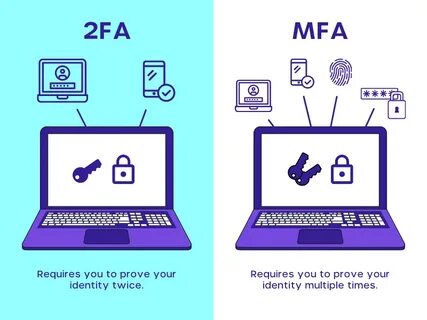MFA Identity Verification: Enhancing Security in the Digital Age
In today’s digital age, identity theft and cybercrime have become a major concern for individuals and organizations alike. With the increasing use of online services and remote work, the need for robust identity verification methods has become essential. Multi-factor authentication (MFA) is a security protocol that provides an additional layer of protection to prevent unauthorized access to sensitive data and systems. In this article, we will explore the concept of MFA identity verification, its benefits, and how it works.
MFA Identity Verification: What is it?
MFA identity verification is a security process that requires users to provide multiple forms of identification to access their accounts or systems. This process involves the use of two or more factors, such as a password, a security token, or a biometric identifier, to authenticate the user’s identity. The use of multiple factors makes it more difficult for attackers to gain unauthorized access, as they would need to have possession of multiple factors to bypass the security measures.
Benefits of MFA Identity Verification
1. Enhanced Security: MFA identity verification provides an additional layer of security to prevent unauthorized access to sensitive data and systems. It reduces the risk of identity theft, data breaches, and cybercrime, as attackers would need to have possession of multiple factors to bypass the security measures.
2. Improved User Experience: MFA identity verification provides a better user experience by making it easier to identify and authenticate legitimate users. It reduces the number of false positives and false negatives, as users are required to provide multiple forms of identification to access their accounts or systems.
3. Compliance with Regulatory Requirements: MFA identity verification is a regulatory requirement for many industries, such as finance, healthcare, and government. It helps organizations to meet compliance requirements and avoid penalties for data breaches and cybercrime.
How MFA Identity Verification Works
MFA identity verification involves the use of two or more factors to authenticate the user’s identity. The factors can be categorized into three types: something the user knows, something the user has, and something the user is.
1. Something the User Knows: This factor involves the use of a password, PIN, or security question to authenticate the user’s identity. The user is required to provide this information to access their account or system.
2. Something the User Has: This factor involves the use of a security token, smart card, or mobile device to authenticate the user’s identity. The user is required to have possession of this item to access their account or system.
3. Something the User Is: This factor involves the use of a biometric identifier, such as a fingerprint, iris scan, or facial recognition, to authenticate the user’s identity. The user is required to provide this information to access their account or system.
The use of multiple factors provides a more secure and robust identity verification process, as it makes it more difficult for attackers to gain unauthorized access.
Conclusion
MFA identity verification is a critical security protocol that provides an additional layer of protection to prevent unauthorized access to sensitive data and systems. It enhances security, improves user experience, and meets regulatory requirements. The use of multiple factors, such as a password, a security token, or a biometric identifier, provides a more secure and robust identity verification process. As the digital age continues to evolve, MFA identity verification will become an essential component of cybersecurity, helping to prevent identity theft, data breaches, and cybercrime.
